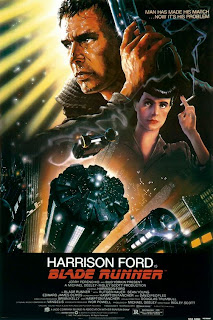“Film
noir” is a cinematic term given by French film critics to describe
stylish Hollywood thriller and gangster dark films which indicates power
relations, cynical attitudes and sexual motivations. The style of film noir is
rather being known as a movement than a genre since it emerged during 1941 to
1958, an era where American suffered insecurity and political instability of
World War II and Cold War. It was an awkward situation to question the
masculinity identity after men have returned from war while women have expended
themselves beyond merely doing house chores. According to Susan Haywood, film
noir is more than just a genre or movement. It is above all a visual style
which came about as a result of political circumstances and cross-fertilisation
to express despair, fear, and guardedness of the particular period of time.
Film noir usually deal with a seductive femme fatal that lured the protagonists
to fall into a deadly situation to achieve her goals, merely to portray the male
fears of feminism.
The
1940s and 1950s were the booming era of American film noir. The themes of the
films were very dark and involved a lot of crimes, detectives and gangsters.
However, it was not widely known in America until 1970s because film noirs was
also referred to melodramas, western and other genres. The arguably first
dark film produced was Marcel Carne’s Le Jour se Leve in 1939, a high contrast
lighting film which full of sense of dread and anxiety. Besides that,
there are other films created by Julien Duvivier and Jean Renoir which also managed
to show the deep pessimism of French poetic realist visual code. The films are
deeply influenced by German Expressionism, an artistic movement in the
beginning of 20th century that involved in theatre, photography,
painting, sculpture and cinema as well. High contrast lighting, the usage of
shadow and alienated setting are the characteristics of German Expressionism
that adopted by film noir.
In
the late 1930s until the beginning of 1940s, a lot of European filmmakers moved
to Hollywood due to the rising of anti-Semitic pogroms and the threat of war. Taking
advantage of the post-war ambience of instability, these political events have
completed the cross-fertilization of shaping the style of film noir. This
movement of film experts and technicians to American have greatly impacted the
characteristics of film noir where most of these people have associated with
German Expressionism before. Some good film-makers involved are Fritz Lang,
Billy Wilder and Max Ophuls.
In the 1960s come 1970s,
a new style emerged, and it is known as neo-noir. It is a style often seen
having the same elements and characteristics as film noir, however the themes
and ideas that are used in the stories are very much more adventurous than
those film noirs of the 1940s and 1950s. “Neo-noir tackles stories and themes
not attempted by its stylistic predecessor, film noir: deeply corrupt cops,
serial killers, psychopaths, and young fugitive couples running from the law,
among other themes” (Schwartz, 2005)
Neo-noir, which can be
known as “new noir” often incorporates modern feel, situations and
circumstances that was quite absent during the glory days of the original film
noir. Unlike the classic film noir, neo-normal films are made in a way that constantly
makes it aware to the audience that they are not part of the film, but merely watching
it and this is achieved by unconventional camera movements and the way the plot
moves from one point to the other.
The Neo-noir style is
very much with time and technology also, for movies such as Bladerunner which
stars Harrison Ford, the film shows a time and place that is very futuristic.
Flying cars and killing targets that turn out to be robots, this film is a good
example of Neo-noir as it brings the sensibilities of Noir into the futuristic
imaginative timeline plot of the story. The normal essence found in the classic
film noir movies such as slow moving plot line, slow music that follows the
scene, dark and specific lightings, etc., many are seen in this movie.
Ever since the 1970s
onwards, we have had Neo-Noir films which had brought back the essence of Film
Noir. And this style is now still being ventured into other genres due to many
films these days being products of overlapping genres, therefore the style is
still developing as it moves through the ages thought the essence of the
classic version of the style remains.




















